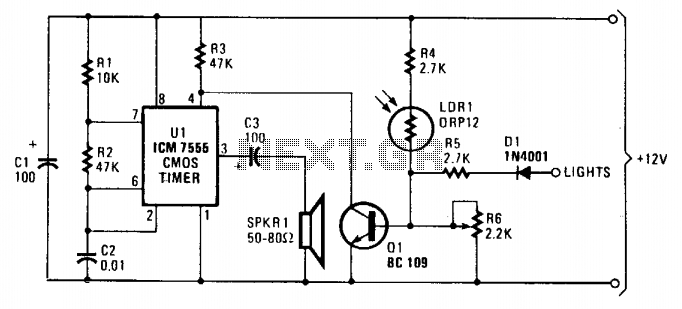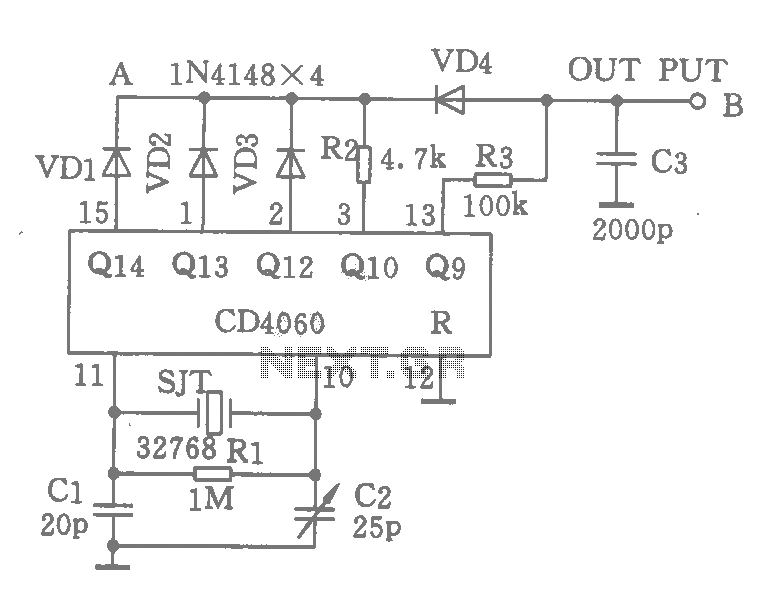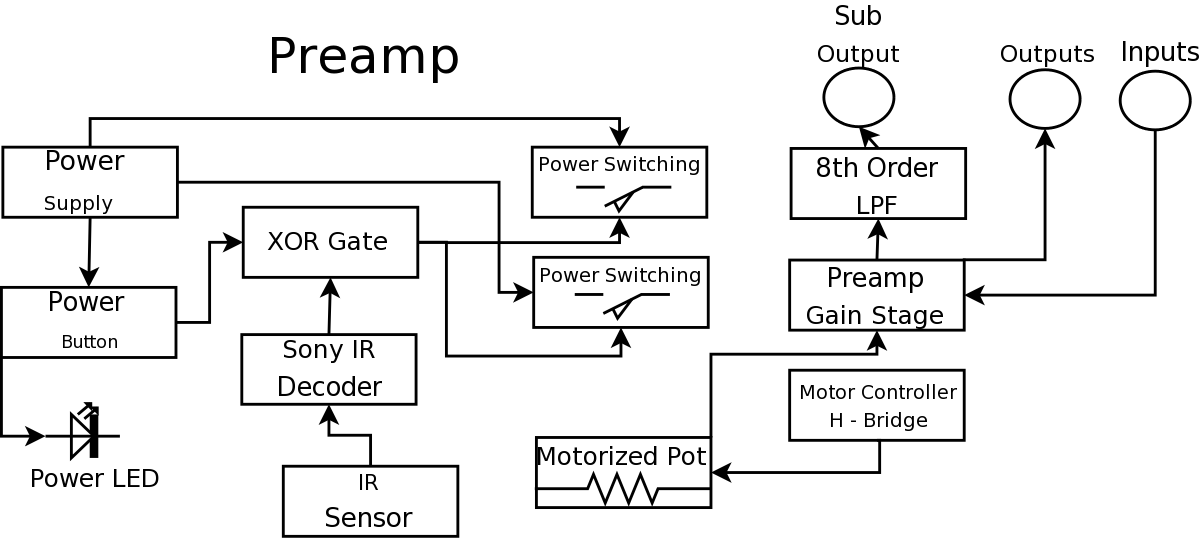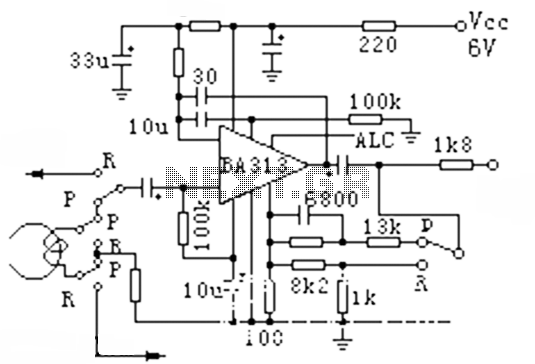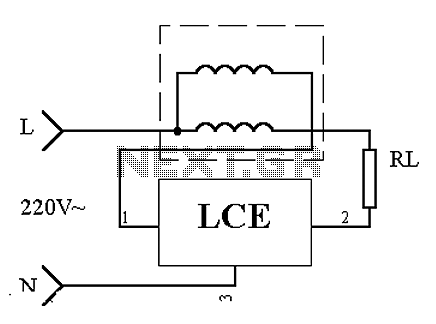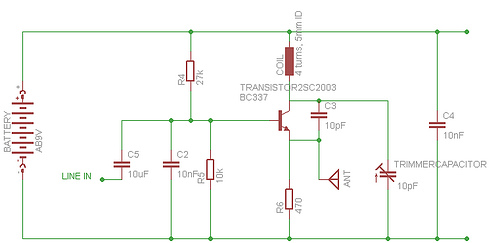
Download NL5 Non-Linear Electronic Circuit Simulator
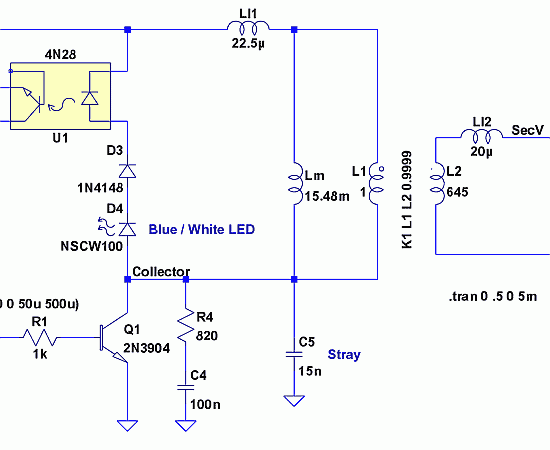
Since then, NL has evolved into the Microsoft Windows®-based NL4, which has been extensively used by world-class engineers in various fields of electronics for almost 10 years. NL5 is the first version to be publicly available. Unlike conventional SPICE-based simulators, which claim to perform accurate simulations of electronic circuits using complex and detailed non-linear component models with numerous parameters, the NL5 approach is quite different. First, NL5 deals with ideal components as much as possible. An ideal component is one that provides just the basic functionality required for that type of component. As a rule, it is very simple and described by a minimal number of parameters. As a result, its behavior is clear and predictable. For example, an ideal switch has zero resistance when closed, infinite resistance when open, and switches instantly; thus, no parameters are required at all. Second, non-linear components (e.g., diodes, transistors, or amplifiers) are represented as piecewise linear (PWL) models, consisting of a number of linear segments. For instance, a simple diode is either open or closed, so its PWL representation consists of just two segments. As long as all components remain within their current linear segment, the same system of linear equations can be utilized. The system is modified only when at least one component changes its linear segment. This can always be accomplished much faster than solving complex non-linear equations at nearly every step of simulation, which is what SPICE-based simulators typically do. Understanding these NL5 principles provides users with full control of the simulation process. Using ideal components with simple PWL models results in extremely fast simulations and gives a general idea of circuit functionality very quickly. On the other hand, more accurate results can be achieved by identifying critical components (those that most affect circuit performance) and using more complex models for those components. Thus, users can always make a reasonable trade-off between simulation speed and the desired level of accuracy. NL5's major advantage is its ability to iterate through the schematic and perform simulations extremely quickly. This is especially important in the early stages of a project, where, using ideal components and simple models, engineers can evaluate a general concept and prove the feasibility of the design very quickly. After that, a thorough analysis can be conducted by applying more accurate models and adding reasonable complexity to critical components. Although originally designed for simulating switching power supplies, NL5 has proven to be an excellent simulation tool for almost any type of electronic circuitry, from nanosecond transmission lines and high-power RF generators to precision instrumentation and digital signal processing. Recently added frequency domain analysis and some unique features broaden NL5's horizons, offering engineers almost all they would ever need for productive work. NL5 is ideal for novices and students studying electronics. The learning curve is negligibly short: basic knowledge of the Windows® operating system is sufficient to start working with NL5. A friendly and intuitive interface allows for fast modifications of the schematic, even enabling on-the-fly editing while the simulation is running, thus providing instant answers to "what if" questions. Experienced engineers can simulate relatively large systems, taking advantage of the extremely fast and robust algorithm, as the convergence problem inherent to SPICE is no longer an issue. A simple yet powerful scripting language allows users to perform complex tasks, running NL5 as an add-on simulation engine.
NL5 represents a significant advancement in simulation technology for electronic circuits, offering a unique blend of speed, simplicity, and flexibility. Its architecture is designed to optimize the simulation experience by prioritizing ideal components and employing piecewise linear models for non-linear devices. This approach minimizes computational complexity, allowing engineers to quickly assess circuit behavior without the overhead associated with traditional SPICE-based simulations.
The modeling of ideal components within NL5 serves to streamline the simulation process. By abstracting components to their essential functions, NL5 reduces the number of parameters that need to be managed, thus enhancing clarity and predictability in circuit behavior. For instance, the ideal switch model, which operates with zero resistance when closed and infinite resistance when open, allows for immediate understanding of its role in the circuit without the need for additional parameters.
The piecewise linear representation of non-linear components further simplifies the simulation process. This method effectively captures the behavior of components like diodes and transistors through linear segments, facilitating the use of linear equations for simulation. The ability to modify the system of equations only when a component transitions between segments significantly accelerates the simulation speed, making it possible to handle larger and more complex circuits efficiently.
In practice, NL5's design philosophy enables engineers to conduct rapid iterations during the design phase, fostering an environment conducive to innovation and experimentation. By using ideal components in the initial stages, engineers can quickly validate concepts and explore various design alternatives before committing to more detailed analyses with complex models for critical components.
The versatility of NL5 is evident in its applicability across a wide range of electronic systems, from RF applications to digital signal processing. The addition of frequency domain analysis capabilities further enhances its functionality, allowing engineers to conduct comprehensive evaluations of circuit performance in both time and frequency domains.
The user-friendly interface and minimal learning curve make NL5 accessible to both novices and experienced professionals. The ability to modify schematics in real-time during simulations empowers users to explore hypothetical scenarios and gain immediate insights into circuit behavior. This feature is particularly beneficial in educational settings, where students can engage with electronic concepts interactively.
In conclusion, NL5 stands out as a powerful tool for electronic circuit simulation, combining speed, simplicity, and flexibility to meet the diverse needs of engineers across various disciplines. Its innovative approach to modeling and simulation positions it as a valuable asset in the toolkit of modern electronics design and analysis.Since then NL has evolved into the Microsoft Windows ®-based NL4, which has been used extensively by world-class engineers in different fields of electronics for almost 10 years. NL5 is the first version to be publicly available. Unlike conventional SPICE-based simulators, which pretend to perform accurate simulation of electronic circuits using complex and
detailed non-linear component models with dozens of parameters, the NL5 approach is quite different. First, NL5 deals with ideal components as much as possible. An ideal component is one that provides just a basic functionality required for component of that type.
As a rule, it is very simple and described by a minimal number of parameters. As a result, its behavior is clear and predictable. For example, an ideal switch has zero resistance when closed, infinite resistance when open, and it is switching instantly. For such a switch no parameters are required at all. Second, non-linear components (e. g. diodes, transistors, or amplifiers) are represented as piecewise linear (PWL): consisting of a number of linear segments.
For instance, a simple diode is either open or closed, so that its PWL representation consists of just two segments. As long as all of the components are staying within their current linear segment, the same system of linear equations can be used.
The system is modified only at the moments when at least one component changes its linear segment. This can always be done much faster than solving complex non-linear equations at almost every step of simulation, which is what SPICE-based simulators usually do. Understanding these NL5 principles gives users full control of the simulation process. Using ideal components with simple PWL models results in an extremely fast simulation, and gives a general idea of circuit functionality very quickly.
On the other hand, more accurate results can be obtained by identifying critical components (those that affect circuit performance the most), and using more complex models for those components. Thus, users can always make a reasonable trade-off between simulation speed and desired level of accuracy.
NL5`s major advantage is its ability to do iterations of the schematic and perform a simulation extremely fast. This is especially important in early stages of a project, when, using ideal components and simple models, engineers can evaluate a general concept and prove the feasibility of the design very quickly.
After that, a thorough analysis can be performed by applying more accurate models and adding reasonable complexity to critical components. Despite being originally designed for simulating switching power supplies, NL5 has proved to be an excellent simulation tool for almost any type of electronic circuitry, from nanoseconds transmission lines and high power RF generators, to precision instrumentation and digital signal processing.
Recently added frequency domain analysis and some quite unique features broaden NL5`s horizons, offering engineers almost all they would ever need for productive work. NL5 is ideal for novices and students studying electronics. The learning curve is negligibly short: basic knowledge of the Windows ® operating system is all that`s needed to start working with NL5.
A friendly and intuitive interface allows fast modifying of the schematic, even on-the-fly editing while the simulation is running, thus giving instant answers to what if questions. Experienced engineers can simulate rather large systems, taking advantage of extremely fast and robust algorithm, since the convergence problem inherent to SPICE is no longer an issue.
A simple, yet powerful, scripting language allows the user to perform complex tasks running NL5 as add-on simulation engine with p 🔗 External reference
NL5 represents a significant advancement in simulation technology for electronic circuits, offering a unique blend of speed, simplicity, and flexibility. Its architecture is designed to optimize the simulation experience by prioritizing ideal components and employing piecewise linear models for non-linear devices. This approach minimizes computational complexity, allowing engineers to quickly assess circuit behavior without the overhead associated with traditional SPICE-based simulations.
The modeling of ideal components within NL5 serves to streamline the simulation process. By abstracting components to their essential functions, NL5 reduces the number of parameters that need to be managed, thus enhancing clarity and predictability in circuit behavior. For instance, the ideal switch model, which operates with zero resistance when closed and infinite resistance when open, allows for immediate understanding of its role in the circuit without the need for additional parameters.
The piecewise linear representation of non-linear components further simplifies the simulation process. This method effectively captures the behavior of components like diodes and transistors through linear segments, facilitating the use of linear equations for simulation. The ability to modify the system of equations only when a component transitions between segments significantly accelerates the simulation speed, making it possible to handle larger and more complex circuits efficiently.
In practice, NL5's design philosophy enables engineers to conduct rapid iterations during the design phase, fostering an environment conducive to innovation and experimentation. By using ideal components in the initial stages, engineers can quickly validate concepts and explore various design alternatives before committing to more detailed analyses with complex models for critical components.
The versatility of NL5 is evident in its applicability across a wide range of electronic systems, from RF applications to digital signal processing. The addition of frequency domain analysis capabilities further enhances its functionality, allowing engineers to conduct comprehensive evaluations of circuit performance in both time and frequency domains.
The user-friendly interface and minimal learning curve make NL5 accessible to both novices and experienced professionals. The ability to modify schematics in real-time during simulations empowers users to explore hypothetical scenarios and gain immediate insights into circuit behavior. This feature is particularly beneficial in educational settings, where students can engage with electronic concepts interactively.
In conclusion, NL5 stands out as a powerful tool for electronic circuit simulation, combining speed, simplicity, and flexibility to meet the diverse needs of engineers across various disciplines. Its innovative approach to modeling and simulation positions it as a valuable asset in the toolkit of modern electronics design and analysis.Since then NL has evolved into the Microsoft Windows ®-based NL4, which has been used extensively by world-class engineers in different fields of electronics for almost 10 years. NL5 is the first version to be publicly available. Unlike conventional SPICE-based simulators, which pretend to perform accurate simulation of electronic circuits using complex and
detailed non-linear component models with dozens of parameters, the NL5 approach is quite different. First, NL5 deals with ideal components as much as possible. An ideal component is one that provides just a basic functionality required for component of that type.
As a rule, it is very simple and described by a minimal number of parameters. As a result, its behavior is clear and predictable. For example, an ideal switch has zero resistance when closed, infinite resistance when open, and it is switching instantly. For such a switch no parameters are required at all. Second, non-linear components (e. g. diodes, transistors, or amplifiers) are represented as piecewise linear (PWL): consisting of a number of linear segments.
For instance, a simple diode is either open or closed, so that its PWL representation consists of just two segments. As long as all of the components are staying within their current linear segment, the same system of linear equations can be used.
The system is modified only at the moments when at least one component changes its linear segment. This can always be done much faster than solving complex non-linear equations at almost every step of simulation, which is what SPICE-based simulators usually do. Understanding these NL5 principles gives users full control of the simulation process. Using ideal components with simple PWL models results in an extremely fast simulation, and gives a general idea of circuit functionality very quickly.
On the other hand, more accurate results can be obtained by identifying critical components (those that affect circuit performance the most), and using more complex models for those components. Thus, users can always make a reasonable trade-off between simulation speed and desired level of accuracy.
NL5`s major advantage is its ability to do iterations of the schematic and perform a simulation extremely fast. This is especially important in early stages of a project, when, using ideal components and simple models, engineers can evaluate a general concept and prove the feasibility of the design very quickly.
After that, a thorough analysis can be performed by applying more accurate models and adding reasonable complexity to critical components. Despite being originally designed for simulating switching power supplies, NL5 has proved to be an excellent simulation tool for almost any type of electronic circuitry, from nanoseconds transmission lines and high power RF generators, to precision instrumentation and digital signal processing.
Recently added frequency domain analysis and some quite unique features broaden NL5`s horizons, offering engineers almost all they would ever need for productive work. NL5 is ideal for novices and students studying electronics. The learning curve is negligibly short: basic knowledge of the Windows ® operating system is all that`s needed to start working with NL5.
A friendly and intuitive interface allows fast modifying of the schematic, even on-the-fly editing while the simulation is running, thus giving instant answers to what if questions. Experienced engineers can simulate rather large systems, taking advantage of extremely fast and robust algorithm, since the convergence problem inherent to SPICE is no longer an issue.
A simple, yet powerful, scripting language allows the user to perform complex tasks running NL5 as add-on simulation engine with p 🔗 External reference
